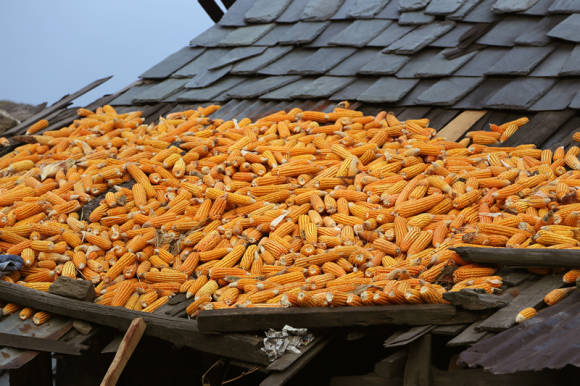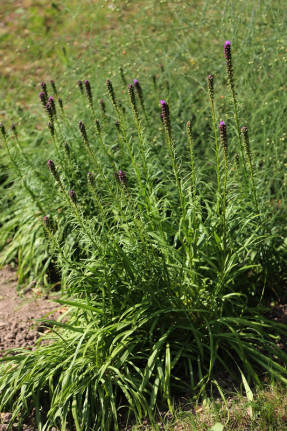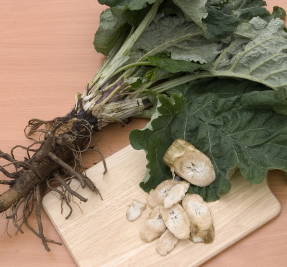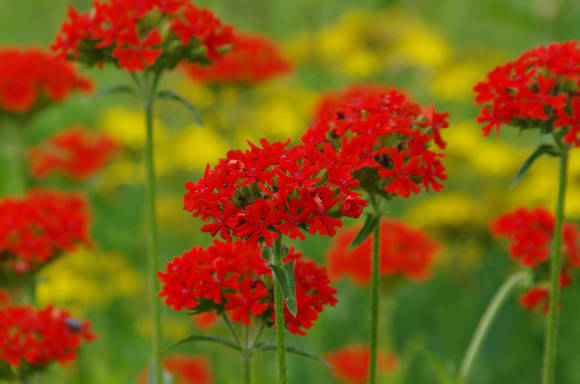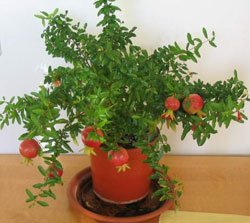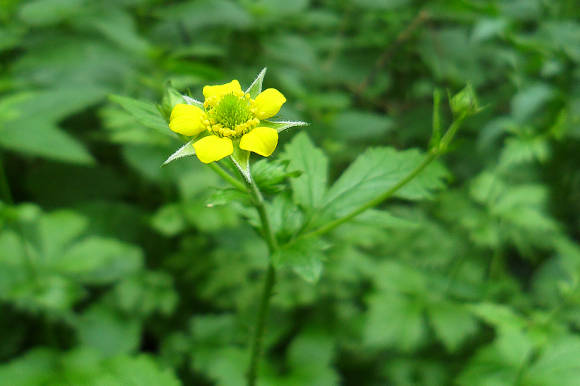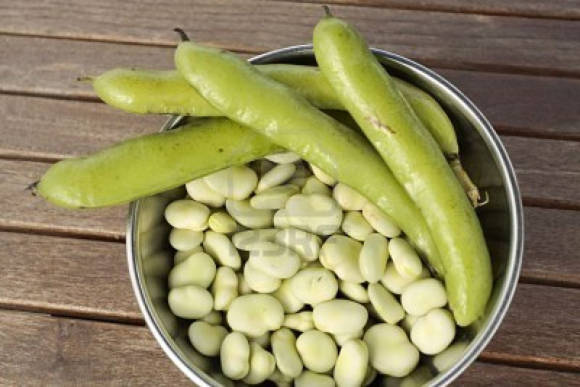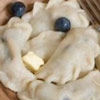
Vigna is a type of asparagus beans, which has many cultivars - currently there are 19. Almost all plants develop strong shoots, most varieties are also very long - reaching 4 m, and have long pods.
The cowpea originates from Ethiopia and East Africa, and the range covers the tropics, and subtropical, and temperate regions. This crop is very actively grown in Central Asia and the Caucasus, where it is widely used for food.
The genus has absorbed as many as 118 species of legumes, and one species has been introduced into the culture - Vigna unquiculata.
An annual plant, it is also called cow peas. The leaves are easy to confuse with those of the beans, and if you look closely, you can see that the boats of the corolla of its flowers are curved like the bow of a boat, that is, not like that of the beans.

The growing season of cowpea can last from 2 to 4 months or more. During this period, each plant is able to form up to 350 flowers, but most of them fall off. Vigna blooms from 2 weeks to a month, sometimes longer.
Culture requirements
In addition to the sometimes prolonged flowering and strong discarding of flowers, you should know that the cowpea makes increased demands on heat. So, for example, the seeds of this plant will not budge if the temperature is not higher than 12 degrees Celsius, and during the period of plant development, it should not be lower than + 25оС. During the flowering period, it is desirable a couple of degrees higher, but if the temperature is very high - more than + 35 ° C, growth will slow down greatly, not only flowers in very large quantities can fall off, but also beans. In the same way, the plant reacts to frost, and when the temperature drops to + 5 ° C, it can die completely.
As for the lack of moisture, the lack of air moisture in the cowpea is not particularly terrible, but the cowpea reacts extremely negatively to the lack of soil moisture, and the soil should be slightly moist throughout the season. Even seeds absorb almost one and a half times more moisture than they themselves weigh.
But it is not worth pouring the plant and turning the garden into a swamp, from this the vegetative mass will grow strongly, and the flowering will be weak, as well as the harvest.
The most moisture-demanding periods are flowering and the formation of beans; it is simply impossible to allow the soil to dry out during this period.
The culture prefers a short day, in such conditions the plants have a shorter growing season, are weaker stretching, have a smaller area of leaf blades, but productivity is, on the contrary, greater. And vice versa.
As for the soil, then the vigna does not make any special requirements, it works great on sandstones, alumina, it even tolerates the increased acidity of the soil layer, it can grow well on brown forest soils, and so on.
Raising cowpea

Initially, you need to dig up the soil well in the autumn - on a full bayonet of a shovel with about 2 buckets of humus embedded in the soil, 28 g of superphosphate and 18 g of potassium sulfate per 1 m2. So leave until spring, and a week before sowing, add 18 g of urea each, also for digging the soil and leveling it.
Sowing... You can start sowing seeds as soon as the temperature becomes stable in the region of + 13 ... + 15 ° C, and the threat of recurrent frosts will be completely excluded.
Seeding should be carried out to a depth of about 4 cm, leaving about 40 cm between them.
Support... Immediately after sowing, it is necessary to provide for the installation of supports, since most varieties are woven. As a support, you can use a gazebo, a fence, or build a special trellis.
Care... After sowing and until the end of the season, the soil must be kept slightly moist, usually by watering it a couple of times every 10 days. In addition, one should not forget about loosening the soil and removing weeds.
Pests... Sometimes the cowpea is attacked by aphids, it is necessary to fight the aphids with appropriate insecticides and at the same time exterminate the ants that carry this aphid.In the later stages of the appearance of aphids, insecticides cannot be used; plants can be treated with a simple infusion of celandine or garlic infusion.
Top dressing... During the season, you need to make 2 top dressing, you can use a regular nitroammophoska. At the beginning of the season, a month after sowing, cowpea is fed by dissolving a tablespoon of nitroammophoska in a bucket of water, this is the norm per square meter. After another week, you can spray the plants by dissolving a couple of teaspoons of nitroammophoska in a bucket of water, you need to spray the plants thoroughly and strictly in the evening.
When the lashes grow so much that they can be tied up, then initially, so as not to damage, they should be tied to the very base of the support or trellis, and only then directed in the direction you want. Scourges usually develop quite quickly.
The cowpea eat green beans, seeds and even leaves. The rest can be fed to farm animals.
Cooking recipes with asparagus beans:
- Baked asparagus beans with ginger
- Asparagus bean and egg salad
- Saute with potatoes, tomatoes and asparagus beans
- Chicken with green beans and ginger in sauce
- Vegetable soup "Three beans" with pesto sauce
About useful properties of cowpea
In addition to nutritional value (up to 25% protein, more than 62% carbohydrates, over 1.0% fat), cowpea is also used for the manufacture of fibers, ropes and similar products. In addition, it is a wonderful green manure that enriches the soil with nitrogen.
Varieties of cowpea
In total, there are 19 varieties in the State Register of Breeding Achievements of the Russian Federation, all of them deserve to be cultivated on their plots.
The general positive point of all varieties is the complete absence of fiber and parchment layer, suitability for canning and freezing, for use in cooking.
The yield of varieties is also quite significant (from 1.5 to 2.5 kg per square meter), such cultivars as Gloria, Countess, Dachnitsa, Kalancha, Liliana, Macaretti, Martha, Nezhnaya, Niagara, Pergola Bobovaya, Rowan Beads, have the maximum yield. Siberian Size, Fuete, Chucha, Jubilee and Yunnan.
The maximum weight of 100 beans, reaching 5500 grams, has the varieties Countess, Dachnitsa, Kalancha, Nezhnaya and Siberian Size.
The grades of Countess, Maya and Siberian Size have the most pleasant taste.
If we talk about specific varieties:
- Aliya characterized by an early period of ripeness, which is an undoubted advantage, but the yield from 1 m2 rarely exceeds 500 g;
- Gloria allows you to collect after 100 days from the emergence of sprouts on the surface of the soil, and in general this variety is very good, however, the mass of 100 beans is average - a little more than a kilogram;
- Countess - yields a crop already two months after germination, this variety literally has no flaws;
- Summer resident - an early ripe variety, but the length of plants sometimes reaches 4 m, this must be taken into account when planting;
- Kalancha characterized by an early ripeness period, reaches a length of 3.8 m;
- Lillian ripens 7-10 days later than the previous variety, plants grow 3.5 m long, have a low mass of beans;
- Mayan - the middle ripeness period, the plant is more of a bush type, does not exceed 75 cm, the yield is low, not more than 0.44 kg per 1 m2;
- Macaretti - a little more than two months pass from the emergence of seedlings to harvest, the weight of 100 beans is average - about 3 kg, the palatability is average, the yield does not exceed 1.5 kg per 1 m2;
- Martha - early ripening, climbing plant, reaching 3.5 m;
 |  |
- Delicate - medium ripening, plants also reach a length of 3.5 m;
- Niagara - the ripeness period is average, the length of the plant is up to 3.5 m, the average weight of 100 beans can be noted - about 2500 g;
- Olesya - about 100 days pass before harvesting, the plant is a standard bush up to 70 cm high;
- Pergola Bean - the ripening period is average, the length is about 3.0 m, it should be noted that the mass of 100 beans is 3300 g, and the yield is 1.4 kg per 1 m2;
- Rowan Beads - the ripening period is average, the length of the climbing plant is up to 3.5 m;
 |  |
- Siberian Size - it is permissible to harvest the crop after 60 days, the length of the shoots is 2.5 m, the yield is low - about 1.4 kg per 1 m2;
- Fouette - only 46 days before the harvest, the plant is not tall - about a meter, it should be noted that the mass of 100 beans is not very high - 1000 g;
- Chucha - the ripeness period is average, the plant is stretched per meter, the weight of 100 beans is about 1000 g, although the yield is excellent;
- Anniversary - you will have to wait 2.5 months for removal, the shoots are quite stretched out - up to 4 m;
- Yunnan - 60 days before harvesting, the shoots are extended by 2.5 m, the yield is not very high - about 1.4 kg per 1 m2, otherwise the variety is good.
Photo varieties: Company "Gavrish"
www.gavrishseeds.ru
